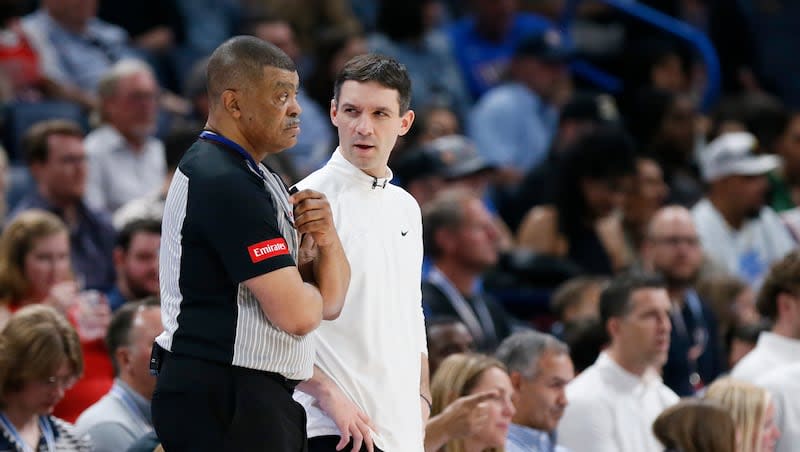NBA sends memo to teams, clarifying coach’s challenge rules on out-of-bounds calls

On Tuesday, the NBA sent a memo to teams, clarifying rules regarding coach’s challenges as it pertains to out-of-bounds calls that are originally ruled a jump ball.
The memo included this clarifying clause:
For a Coach’s Challenge of a called out-of-bounds violation where the referees were unable to determine which team last touched the ball and thus signaled for a jump ball, there are three potential outcomes:
a. The challenging team is awarded possession (successful Challenge)
b. The challenging team’s opponent is awarded possession (unsuccessful Challenge)
c. The team to be awarded possession is still inconclusive following replay review, and play resumes with a jump ball as called on the floor (unsuccessful Challenge)
The memo came as a response to some confusion during the Oklahoma City Thunder’s Game 1 win over the New Orleans Pelicans in the opening round of the 2024 playoffs on Sunday.
During that game, Thunder head coach Mark Daigneault challenged an out-of-bounds call that was ruled a jump ball when officials could not tell who last touched the ball. After review, it was determined that the Thunder were last to touch the ball and that New Orleans would have possession. But since the ruling on the floor had been changed, the challenge was deemed successful, which was announced by crew chief Tony Brothers.
That result matched a previous incident with the same type of call and result of a coach’s challenge made on Jan. 18 when the Thunder visited the Utah Jazz.
But shortly after Brothers made the successful challenge announcement on Sunday, Daigneault was notified that he would not retain his timeout, which was in contrast to what had been originally announced as well as the preceding event in Utah.
According to league sources, a midseason change to the rule was the reason for the confusion on Sunday and not only was the change to the original rule not communicated clearly to teams, but also to some of the league’s officials, which was the reason for so much confusion on Sunday.
Originally, the rule allowed for a coach to retain their challenge and timeout so long as the ruling on the floor was changed, even if the challenging team did not end up with possession of the ball. The way the rule reads now, a “successful” challenge, in the case of a jump ball after an out-of-bounds call, is dependent on the challenging team also being awarded possession following review.
“We did get clarity on that,” Daigneault said on Tuesday. “The way that the rule is going to be applied moving forward is the way that they applied it in (Game 1), not the way that they applied it in Utah. I was just confused because it was it was applied differently in the same season. ... That’ll factor into my decision-making as we move forward.”

